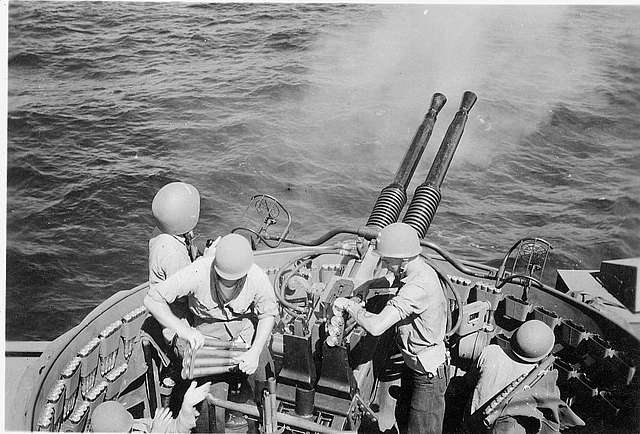Despite Chamberlains proclamation of "Peace in our time" the
Antarctican Senate could see the war on the horizon, coming
rapidly toward the world. The Navy wanted a design for an all
purpose destroyer based on the Hearne class but with more
attention to both ASW and AA rather than surface warfare only.
Many changes were made. The removal of Y turret from the poop
deck gave space for more depth charges and stowage. The removal
of the rear torpedo mounting allowed for a new quad 2 pounder
mounting. The forward torpedo mounting was changed from a
quadruple to a quintuple tube mounting. The bridge
superstructure was enlarged to allow for better command and
control functions.
The first two of the class
were experimental vessels that tested all of the ASW and AA
trials that were done on earlier ships. One thing that came out
of the ASW trials was that the more explosive you could get in
the water around where you think the submarine you are hunting
is, the more chance you will have of killing your target. This
eventually led to 'Hedgehog' and other ahead throwing mortars.
The other thing that was learnt was that submarines could not
keep up for long when submerged. So the submarine will get as
close to a convoy/fleet/target as possible on the surface before
submerging and attacking. To make the submarine do this as far
away as possible required two things. 1. Radar that could pick
up a surfaced submarine far enough away so that escorts can be
vectored on to it. 2. Aircraft orbiting the area in ASW mode so
that the aircraft can also depth bomb the target and if the
target escapes can vector the escorts onto the target. The
trials also showed the more escorts you had hunting a submarine
the more chance you had of sinking it. One or two could hold the
submarine in their ASDIC beams while a third or fourth could run
over the target dropping the 'pattern' of depth charges. The AA
trials showed the same thing, the more metal you could get in
the air toward your target(s) the more chance you had of hitting
them.
The production line vessels did not start arriving until late
1939. Arriving in groups of four and having a Ronne class leader
assigned to them to provide the 'ship of force'. They proved
excellent 'General' destroyers and could be used almost
anywhere. 1942 and the 40mm refits started appearing on the
ships as they went in to port for their next refit process. More
and more Radar was added with predictors for the 40mm and new
Radar at the mast tops. Hedgehog appeared in place of the twin
20mm and pack of liferafts forward was a big advance for the ASW
fighting abilities. The class members of Batch Two which
completed late 1941 to 1944 had the 40mm AA armament from
completion.
| Displacement | 1,850 tons standard, 2,150 tons full load | |
| Length | 359 ft | |
| Breadth | 36 ft | |
| Draught | 13 ft | |
| Machinery | 2 shaft, steam turbines, 44,000shp | |
| Speed | 35 knots | |
| Range | 8,000 miles at 10 knots | |
| Armament | As completed 4 x 5" (2x2) 8 x 2pd (1x4) 10 x 20mm (1x2, 8x1) |
Refits to 1942 4 x 5" (2x2) 12 x 40mm AA (1x4, 4x2) 1 x Hedgehog |
| Torpedoes | 5 x 21" (1x5) | 5 x 21" (1x5) |
| Complement | 130 | 140 |
| Notes | (Planetoids and Lakes) Batch One Mercury Ceres Pluto Venus Jupiter Saturn Mars Uranus Ganymede Triton Callisto Titan Io Europa Eris Neptune Rhea Haumea Oberon Titania Iapetus Charon Ariel Tethys Batch Two Caspian Michigan Huron Victoria Superior Tanganyika Baikal Great Bear Malawi Great Slave Erie Winnipeg Ontario Ladoga Balkhash Vostock Onega Titicaca Nicaragua Athabasca Reindeer Turkana Issykul Vanern Albert Nettilling Mweru Nipigon Manitoba Taymyr Qinghai Saimaa Khanka Poyang Taupo Tana |
|
Twin 40mm.
